Magnificent St. Paul’s Catacombs – Largest Underground Roman Cemetery In Malta
Conny Waters - AncientPages.com - St. Paul’s Catacombs provide us with the earliest archaeological evidence of Christianity in Malta.
The ancient Roman burial site is the largest and most impressive underground cemetery in the country. The site is open to the public and visitors can access over 20 of the catacombs in the St Paul's cluster.
A journey through this underground labyrinth of rock-cut tombs, narrow stairs, and passages gives a good understanding of ancient Roman and Phoenician burial traditions and customs.
St. Paul’s catacombs in Rabat, Malta. Credit: G.Mannaerts, CC BY-SA 4.0
It’s estimated the first burial here took place in the 3rd century B.C. and the tombs continued to be used until the 4th century A.D.
Not all of the tombs belong to Christians. Within this underground complex, there are also several Pagan and Jewish burials.
Covering an area of more than 2000 square meters, St. Paul’s Catacombs are part of a vast cemetery once located outside the walls of the ancient Greek city of Melite, present-day Mdina.
St. Paul's Catacombs in Rabat, Malta. Credit: Balazs Sudar, CC BY-SA 3.0
Melite started its existence as a Bronze Age settlement before the Phoenicians re-named it Maleth and turned it into the administrative center of the island.
In 218 B.C. Romans successfully captured the city and it remained part of the Roman and later the Byzantine Empire until 870 A.D.
St Paul’s probably started as a smaller underground catacomb complex before it was subsequently enlarged by joining up neighboring hypogea to serve as a communal burial space.
According to tradition, Phoenicians and Romans didn’t want to bury their dead within the city walls and St. Paul’s Catacombs grew in size over time.
Menorah indicating the presence of Jewish burials, Credit: G.Mannaerts, CC BY-SA 4.0
In the late 1800s, scientists started to excavate the massive underground complex and St. Paul’s Catacombs are today excellent documented providing us with cultural, artistic, and social climates of the ancient Mediterranean world. Unfortunately, all tombs were already looted, and no burial artifacts have been discovered.
The site consists of two large areas called St Paul’s and Saints Paul/Agatha consisting of more than 30 hypogea.
Inside the main burial space, you will find a great hall and the impressive Baldacchino free-standing tombs.
The reason this magnificent underground burial complex has been named St Paul's Catacombs is that a Church nearby has this name.
Written by Conny Waters – AncientPages.com Staff Writer
Copyright © AncientPages.com All rights reserved. This material may not be published, broadcast, rewritten or redistributed in whole or part without the express written permission of AncientPages.com
More From Ancient Pages
-
 Mysterious Hakkari Stelae: Were They Carved By Inhabitants Of Ancient Kingdom Of Hubushkia?
Artifacts | Nov 15, 2018
Mysterious Hakkari Stelae: Were They Carved By Inhabitants Of Ancient Kingdom Of Hubushkia?
Artifacts | Nov 15, 2018 -
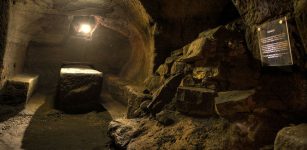 Gilmerton Cove: Mysterious Cave System Still Keeps Its Centuries-Old Secrets
Featured Stories | Nov 27, 2021
Gilmerton Cove: Mysterious Cave System Still Keeps Its Centuries-Old Secrets
Featured Stories | Nov 27, 2021 -
 South American Cultures Quickly Adopted Horses – New Study
Archaeology | Dec 26, 2023
South American Cultures Quickly Adopted Horses – New Study
Archaeology | Dec 26, 2023 -
 Mysterious Ancient Ruins Of Fortress Discovered In Scottish Highlands
Archaeology | Jan 16, 2018
Mysterious Ancient Ruins Of Fortress Discovered In Scottish Highlands
Archaeology | Jan 16, 2018 -
 Spells And Magic Were Important To Samurai Warriors And Used In Battles
Featured Stories | Oct 7, 2017
Spells And Magic Were Important To Samurai Warriors And Used In Battles
Featured Stories | Oct 7, 2017 -
 Ancient People In The Tibetan Plateau Had More Cultural Exchanges Than Previously Thought
Archaeology | Apr 30, 2024
Ancient People In The Tibetan Plateau Had More Cultural Exchanges Than Previously Thought
Archaeology | Apr 30, 2024 -
 On This Day In History: Battle Of Nineveh Was Fought – On Dec 12, 627 AD
News | Dec 12, 2016
On This Day In History: Battle Of Nineveh Was Fought – On Dec 12, 627 AD
News | Dec 12, 2016 -
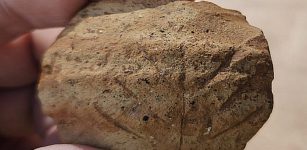 Intriguing Fragment Of A Byzantine-Era Jar Handle, Dating Back Approximately 1500 Years – Unearthed
Archaeology | Sep 5, 2023
Intriguing Fragment Of A Byzantine-Era Jar Handle, Dating Back Approximately 1500 Years – Unearthed
Archaeology | Sep 5, 2023 -
 Remains Of A Roman Ship Discovered In Serbia
Archaeology | Aug 7, 2023
Remains Of A Roman Ship Discovered In Serbia
Archaeology | Aug 7, 2023 -
 Mysterious Ancient “Fish People” – Who Were They And How Did They ‘Change’ Civilizations Worldwide?
Ancient Mysteries | Dec 20, 2021
Mysterious Ancient “Fish People” – Who Were They And How Did They ‘Change’ Civilizations Worldwide?
Ancient Mysteries | Dec 20, 2021 -
 On This Day In History: Discovery Of X-Rays By Wilhelm Roentgen Reported – On Jan 5, 1896
News | Jan 5, 2017
On This Day In History: Discovery Of X-Rays By Wilhelm Roentgen Reported – On Jan 5, 1896
News | Jan 5, 2017 -
 Evidence Europeans Made Leather Clothing 40,000 Years Ago – New Study
Archaeology | Apr 17, 2023
Evidence Europeans Made Leather Clothing 40,000 Years Ago – New Study
Archaeology | Apr 17, 2023 -
 Mysterious Voynich Manuscript Was Written In Two Languages – Scientists Say
Archaeology | Apr 24, 2017
Mysterious Voynich Manuscript Was Written In Two Languages – Scientists Say
Archaeology | Apr 24, 2017 -
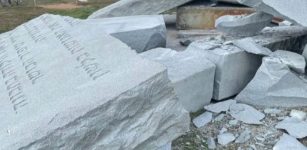 Georgia Guidestones Damaged By An Explosive Device – By Whom And Why?
News | Jul 7, 2022
Georgia Guidestones Damaged By An Explosive Device – By Whom And Why?
News | Jul 7, 2022 -
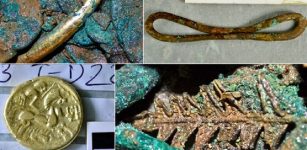 Remarkable Le Catillon II Hoard – World’s Largest Collection Of Celtic Coins And Jewellery
Archaeology | Nov 24, 2015
Remarkable Le Catillon II Hoard – World’s Largest Collection Of Celtic Coins And Jewellery
Archaeology | Nov 24, 2015 -
 Olduvai Gorge: Direct Cosmogenic Nuclide Dating Of Olduvai Lithic Industry
News | Mar 31, 2022
Olduvai Gorge: Direct Cosmogenic Nuclide Dating Of Olduvai Lithic Industry
News | Mar 31, 2022 -
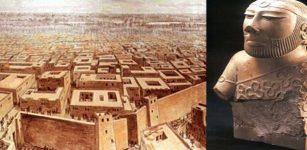 Controversial Ancient History Of Harappa And Mohenjo Daro – Advanced Indus Valley Civilization Pre-Dates Egypt’s Pharaohs And Mesopotamia
Civilizations | Apr 15, 2017
Controversial Ancient History Of Harappa And Mohenjo Daro – Advanced Indus Valley Civilization Pre-Dates Egypt’s Pharaohs And Mesopotamia
Civilizations | Apr 15, 2017 -
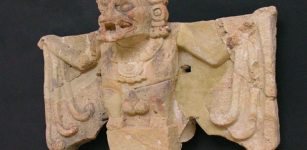 Camazotz: ‘Death Bat’ Vampire God In Ancient Maya Beliefs
Featured Stories | Jun 8, 2017
Camazotz: ‘Death Bat’ Vampire God In Ancient Maya Beliefs
Featured Stories | Jun 8, 2017 -
 82 Mysterious 3,000-Year-Old Pits Discovered In Sweden – Bronze Age Cooking Pits And Ancient Ceremonial Center?
Archaeology | Jun 13, 2017
82 Mysterious 3,000-Year-Old Pits Discovered In Sweden – Bronze Age Cooking Pits And Ancient Ceremonial Center?
Archaeology | Jun 13, 2017 -
 Ostrich Eggshell Beads Reveal 50,000-Year-Old Social Network Across Africa
Archaeology | Dec 21, 2021
Ostrich Eggshell Beads Reveal 50,000-Year-Old Social Network Across Africa
Archaeology | Dec 21, 2021



